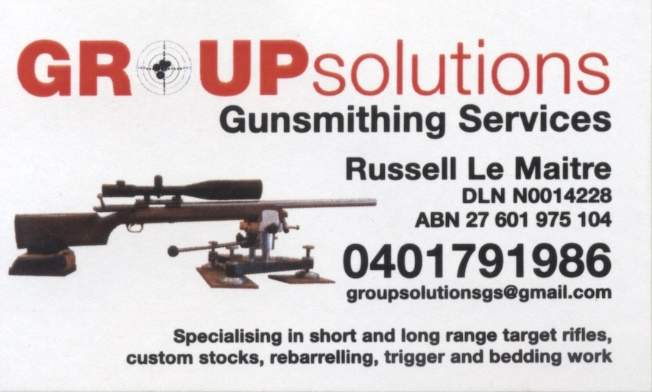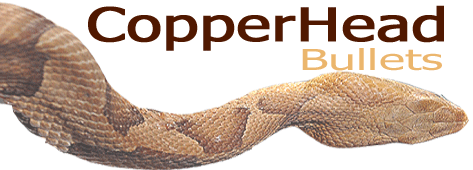Forming Cases with a Hydraulic Form Die;
The subject of forming cases in this way is not a new one to the 500 flyshooter web site. It’s been touched on a number of times in the forum but has also been a conversational peace at any number of matches. Not everyone is convinced of it’s value but I am so much of a believer in this method I feel the need to write an article covering all aspects of the process.
As I am in no way a journalist, I will apologize in advance for any grammatical errors that may occur during this writing.
My first target rifle was a 6mm BRX for which there is no pre-formed brass available. Like the Dasher, my cases need to be formed from standard 6 BR brass. I was led to believe from the accurate shooter web site that fire forming my BRX cases would be a very simple matter. Theoretically this is true, but in practice it was a little more complicated.
I quickly learned I had to fire these cases at least twice but more likely 3 times to get a properly formed, uniform BRX case.
It’s likely I wasn’t doing things exactly right but it didn’t seem to matter whether I used the “jam & shoot”, the “false shoulder” or the pistol powder with no projectile method (and I certainly tried them all) my results were, in a word, “shithouse”. Head space was all over the place & the finished overall length could vary by over 10 thou.
Being anal about my case dimensions these inconsistencies drove me insane. Further more, not having a dedicated fire forming barrel left me with over 200 rounds on my new custom barrel before I had a set of cases that were worth a dam!
Long story short, I ordered and eventually received a Hydraulic Form Die from Hornady.
I won’t claim the process of using this die wasn’t without teething problems, but I will say that I can now form 60 BRX cases, perfectly head spaced for my barrel chamber, in under 2 hours, without leaving home & without firing a shot.
I’m saving on components like powder & projectiles & that expensive custom barrel isn’t being unnecessarily & prematurely shot out! Most importantly though I’m at home & so the Higher Authority (the misses, the better half, the handbrake,) can rest easy should I be needed for that all important Sunday afternoon pruning job!
I now have 4 BRX’s in various calibers, weights & barrel twists & the cases for all are hydraulically formed with the same die I bought from Hornady over 5 years ago.
Additionally, I now have a .284 Shehane that needs to have cases formed from the .284 Winchester case. I have had a form die made by my gunsmith & am happily forming cases to the same level as I do with my BRX’s.
This article explains exactly how I do this.
Basically, a Hydraulic form die is a duplication of your barrel chamber (in die form) with a few variations. The die has a drill hole in it’s top which extends completely through the die into it’s chamber. A case with an old primer seated is filled with water & cycled into the die. A plunger is inserted into the top of the die & wacked with a rubber mallet. Because water will not compress under pressure the plunger forces the water to expand the case to the dimensions of the die when struck with the mallet. It’s necessary to have a purpose built shell holder without a primer hole or the primer will drop out under pressure, water will go everywhere & the case will not form.

The Shell Holder, Plunger & Die.
Because I choose to use Lapua 6.5 x .284 brass I need to neck up to 7mm before I do anything else. Therefore the 1st step is to lube the cases & inside their necks. I use Hornady one shot which is a spray on lube they claim won’t contaminate powder & can be easily sprayed into the case necks.
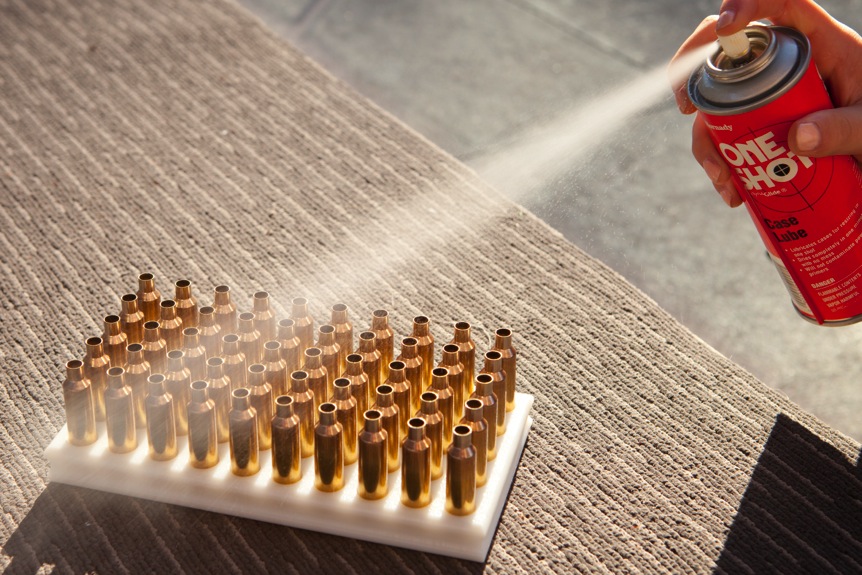
Hornady One Shot Lube
The 2nd step is to expand the necks to 7mm. Getting the correct neck diameter is important & I will explain more about this towards the end of the article. I simply use a K & M expander mandrel. There may be better tools to use but this does the job.
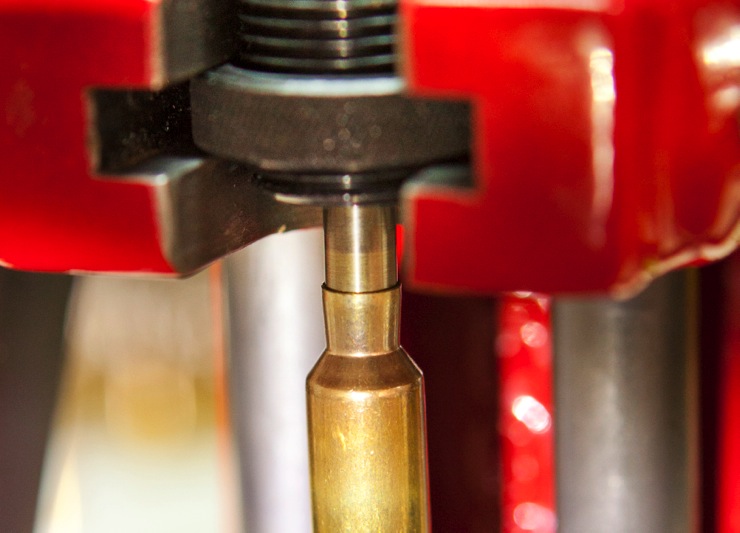
The 3rd step is to seat an old primer. This is necessary to keep water in the case when forming.
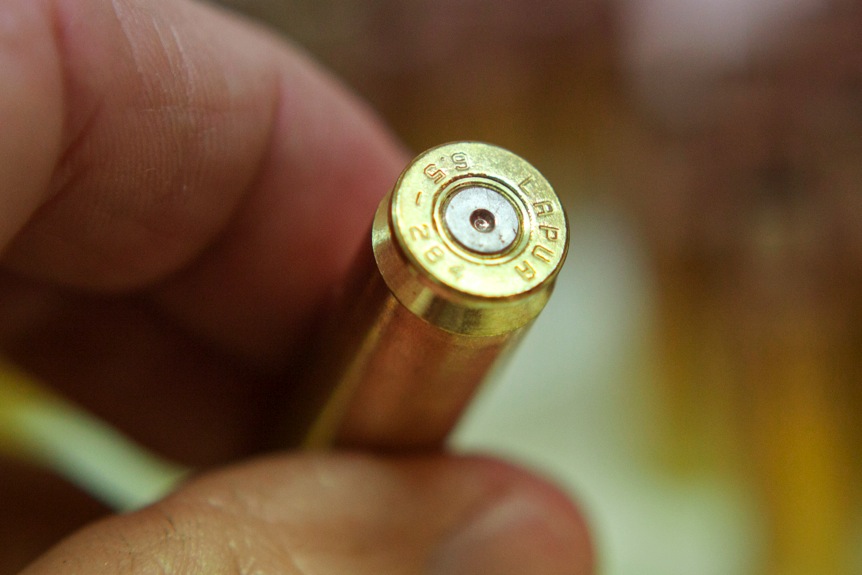
Step 4 is to fill the case to the brim with water. I use a medical syringe.
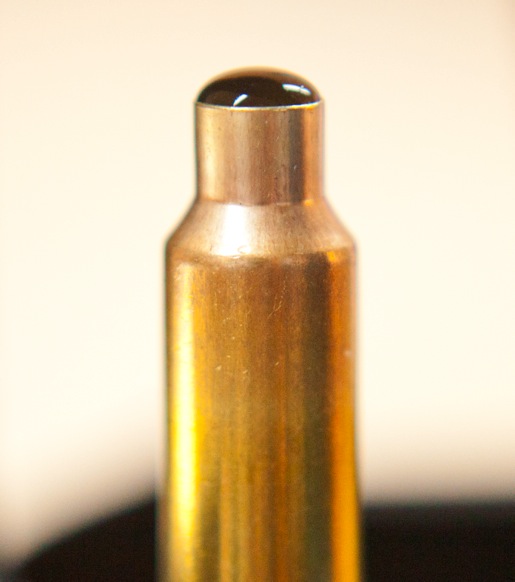
5th step, cycle case into the die,

6th step, place the plunger into the die. It’s a very good idea to smear a little grease or wax (I use imperial die wax) on the plunger to lube it & to help seal the tiny gap between plunger & die.

7th & most satisfying step is the ‘Whack” the plunger.
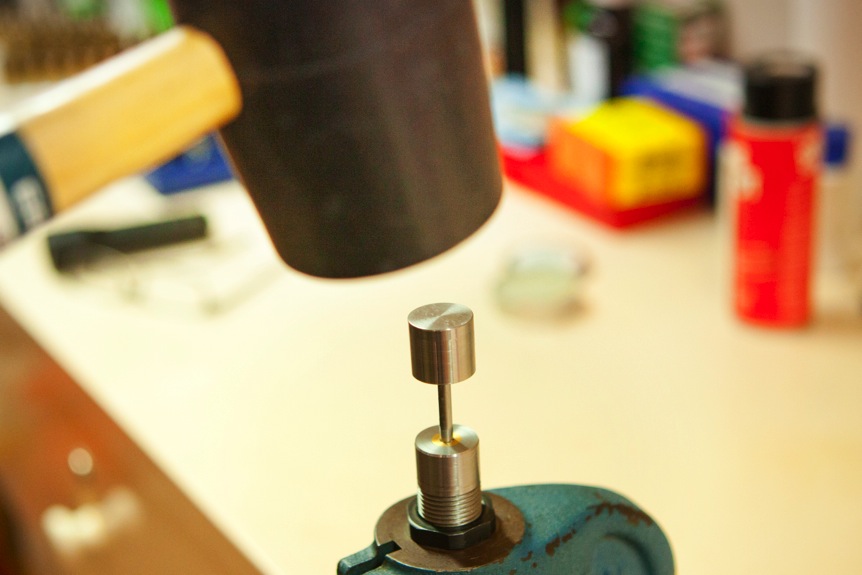
Give the plunger a couple of crisp whacks with a rubber mallet….not so hard that you bend the plunger (which I have done) but hard enough to form out the cases.
This is the area that might require a little practise but if a mechanical moron like myself can do it, anyone can.
Now for the moment of truth; Is the case formed or not? It’s easy to tell if you know your chamber dimensions which your gunsmith should be able to tell you. The 7mm Shehane is a slight improvement on the .284 Winchester. The case taper is reduced by a fraction, widening the shoulder from approx.473 to approx .485/6.

A quick measure will tell me how I’ve gone.
Perfect at the shoulder! But what about that all-important head space?
When forming cases for the very 1st time it’s wise to spend a while getting the length just so.
If I’ve set up the Hydro die correctly the case should be a fraction long meaning that it should be difficult to close the bolt on the rifle with this case in the chamber.
This is an important part of the process and is deliberate because I wish to use my full length die to finish the case.
Simply form up cases and test as you go; If the bolt drops very easily (it’s best to have the firing pin removed) you should wind the die “out” of the press a fraction to make the formed case a little longer. Why? Because if the case is too short the full length die won’t reach the case shoulder resulting in possible head space issues.
If you can’t close the bolt at all then wind the die “in” until you can feel some pressure when closing the bolt on a formed case.
Now we use the full length die to “bump” the shoulder for perfect head space.
One of the criticisms of Hydro Forming has been that the shoulders of the cases are a little rounded. This is true as the pressure from the Hydro process is a lot less than from powder exploding when fire forming. If, though, the case is formed up a little long as suggested, most of this rounding (radius) will disappear when full length resized.
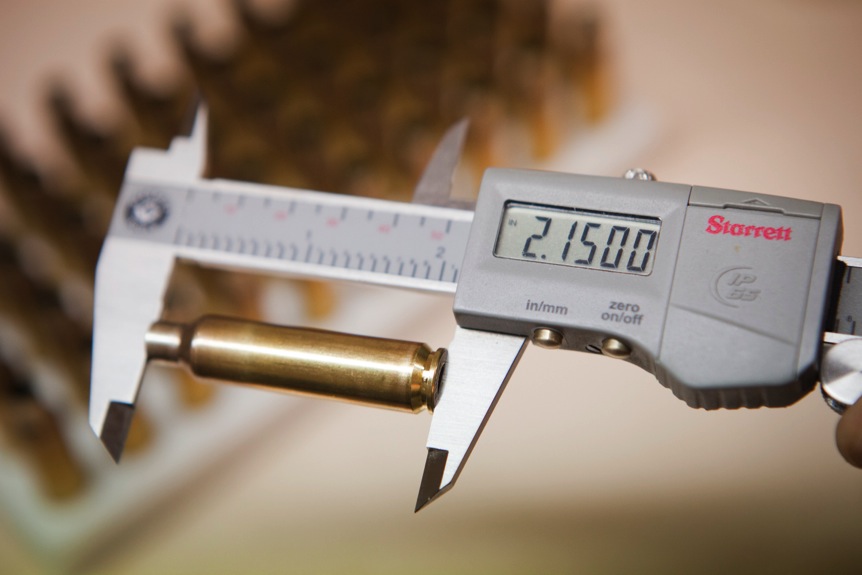
Overall length of fire formed cases was a big issue for me with my BRX cases, there was far too much variance. With the .284 Shehane over 90 of the 100 cases I Hydro formed ended up with an overall length of between 2.148”& 2.150”…this was good enough for me!
Once you have completed your forming you are in position to complete your case prep, ie go to work on turning your necks or working on your primer pockets or, if you’re like me go straight to load development!
How do I go about getting a Hydro Die?
Part of the reason I decided to write this short story is because it’s become a lot simpler to source such a die. Hornady took over 6 months to deliver my first BRX die & I’ve since gotten the feeling they are even less enthusiastic now than they were 5 years ago.
Whidden Gunworks in the US now make their version of this die for what appears to be a reasonable price. If your gunsmith isn’t interested in having a go at it I’d be going to Whidden.
If your gunsmith is prepared to have a go there are some important points to consider.
1; You must have a shell holder with no hole in it’s base in order to keep the old primer in place & thus keep the water in the case.
2; The tolerance between the hole in the top of the die & the plunger must be kept to a bare minimum. We’re talking 4 decimal places (not 3)
3; The neck of the die must put some squeeze on the case neck when it’s cycled into the die. This seals up the die and prevents water from escaping. This is one reason why it’s a good idea to expand the case necks first and also not to turn your necks before you Hydro form.
4; The plunger should be as thick as it can be (for strength) but small enough to fit inside the case neck, otherwise you will obviously damage your case mouths when whacking the plunger.

I won’t deny it might seem like a bit of work to set up the die for the 1st time but I can assure you it’s worth the effort.
I have a Hydro die for my BRX’s & my .284 Shehane. If I had an Ackley improved anything I would certainly have a Hydro die for it & I will be getting a Hydro die for a PPC I recently acquired.
All The Best,
Belly.

